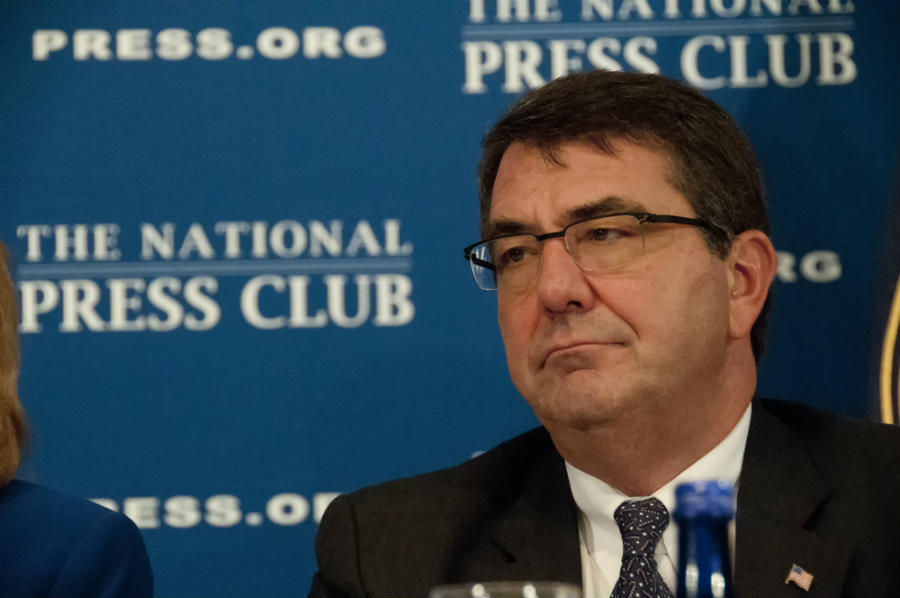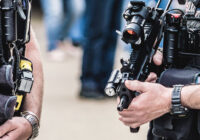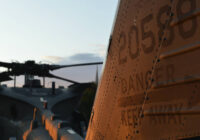Iraqi counterterrorism forces are leading a ferocious campaign against the self-styled caliphate in Anbar province.
On December 1, US Defense Secretary Ash Carter unveiled a signature expansion of the US special operations footprint inside Iraq, confirming a prominent shift toward intensified direct-action raids targeting Islamic State (IS) leaders. This escalation—albeit modest—prominently features the deployment of a new specialized expeditionary targeting force, tasked with conducting coordinated raids with Iraqi and Kurdish forces; though the Pentagon reserves the possibility of unilateral action as conditions warrant.
US Policy in Iraq
The plan outlined to members of the House Armed Services Committee aligns with the Obama administration’s three Rs policy: Ramadi, Raqqa and raids. But more profoundly, it points to a coalesced conviction against ground troop deployments, and instead a firm support for counterterrorism measures as the lacking component in the counter IS campaign.
The Pentagon’s position, which rightly insists that local forces must lead the ground effort, was notably affirmed on December 27, as the Iraqi Counter Terrorism Service, army and federal police liberated key segments of Ramadi—though several vital installations and adjoining neighborhoods remain contested. Despite this initial success, prior anti-IS campaigns in Baiji and Tikrit suggest that the more arduous task of cementing control beyond Ramadi’s core is largely dependent on the restoration of relative civilian security: local Sunni governance, defense against residual IS attacks, and the application of a persistent counterterrorism pressure on the remaining vestiges of Islamic State resistance.
The progress in Ramadi fits squarely within the Obama administration’s stated policy of escalating military assistance, as Iraqi security forces demonstrate their ability to prosecute the ground campaign to decisive victories. In Anbar province, where this challenge is particularly acute (though for reasons germane to Iraq’s distinct sectarian strife), fusing US special operations support with Iraq’s main counterterrorism service serves two allied objectives.
First, it introduces the menace of unexpected raids targeting the group’s top echelons and disrupts the Islamic State’s coherence in leadership.
Second, counterterrorism pressure on the organization—if persistent—secures much needed time for Iraq’s conventional army to mature its expanding capabilities; though such an outcome is subject to a variety of logistic, institutional and political circumstances beyond America’s control or influence.
Achieving the first objective appears probable, given the relative competence of Iraq’s counterterrorism forces. Nonetheless, the likelihood of the Iraqi army melding into a competent ground force, capable of permanently defeating the pseudo-caliphate remains quite uncertain. As the seat of the Islamic State’s insurgency, the complex human terrain in western Iraq requires a first-class ground force able to integrate military tools with a population-centric approach that not only flushes out militants, but also consolidates the liberating force’s control once the fighting concludes. Current evidence of the US-led training effort suggests that Iraq’s conventional military is yet to achieve this level of competence. Nonetheless, the history of special operations engagement between the US and its Iraqi counterparts provides excellent insights on how this new plan will likely materialize.
At the height of its operational performance, the Iraqi Counter Terrorism Service fielded three brigades of special operations forces, a training institution, and functioned with the full-benefit of integrated support and assistance from US Special Forces under the Joint Special Operations Taskforce-Arabian Peninsula. The candidate vetting process applied a strict screening criteria to minimize insurgent infiltration and ensure relative sectarian parity in personnel representation. Induction into this highly specialized force was restricted to those candidates who attained similar operational standards as the US advisors who trained, equipped and led the new force into operational maturity. Professionalism and empowerment of the rank-and-file were governing features of the development process, which translated into a highly capable non-sectarian and relatively de-politicized force.
Decline in Iraq
Beginning in 2007, however, then-Iraqi Prime Minister Nouri al-Maliki triggered the slow decline of a laborious effort undertaken to insulate the counterterrorism service from the divisive politics that shackled other security service sectors. Maliki, in a 2007 executive order, jettisoned civilian oversight and placed the entire directorate under his direct control.
What followed was a slow cannibalization of the entire counterterrorism service and its transformation into an agency of private retribution. By the time IS barreled through Mosul in 2014, the strongest bastion of Iraq’s security sector had substantially declined.
In the absence of a strong conventional Iraqi security force, capable of prosecuting a territorial capture-and-hold mission, Iraqi counterterrorism forces largely adopted the laborious task of leading ground offensives against IS. This diversion from the core counterterrorism mission left the Islamic State’s highly competent cadre of leaders relatively unchallenged until the commencement of US-led airstrikes in September 2014.
Here, the role of Iraq’s Shia militias—Iranian-backed or otherwise—deserves prominent mention. These groups certainly serve a pivotal role in the anti-IS fight.
These weathered and battle-hardened fighters spent years fighting American forces inside Iraq, and the intractable conflict in Syria only fortified their overall competency. They have since provided the skill and coherent leadership that transformed the insurgent group into a tactically adaptive foe, while cementing an internal sense of invincibility among the group’s most committed fighters. Faced with persistent coalition airstrikes and significant territorial losses, IS maintains a defiant posture, exercising a seemingly ubiquitous reach in territories outside its core—as evident in Diyala—while maintaining an entrenched presence in Anbar province.
That the Islamic State is an organization of incredible learning capability is of minimal surprise. The group’s routing in Tikrit supplied ample learning on the lethality of coalition air power, particularly when the risk of collateral damage is relatively low. On the defensive in Ramadi, it adjusted accordingly, restricting the massive humanity outflows that often precede major confrontations with Iraqi security forces. This keen adaptation to the US-led coalition’s initially chastened application of airpower likely contributed to the, at times, stalled counteroffensive to retake the pivotal city. Despite the participation of Sunni tribal fighters, IS militants maintained an entrenched presence in Ramadi for eight consecutive months after its initial seizure in early May 2015.
What Needs To Be Done?
Securing a sustainable counterterrorism edge against the Islamic State is indeed possible if the Iraqi government—with the support of the international coalition—proceeds along the following lines of effort.
First, cementing ground victories in Ramadi (and later Fallujah) denies IS the prime geographic sanctuary it requires to operate. Such an outcome is, however, contingent on the expedient maturation of Sunni forces, who must lead the ground campaign and secure the local legitimacy required to govern. For this particular reason, introducing large numbers of US ground forces—absent invitation—greatly undermines this effort and fuels existing suspicions of a gradual return to American occupation.
Second, applying sustained counterterrorism pressure through high-frequency raids ensures that upon withdrawal, militants who egress into the countryside and beyond are persistently pursued and harassed by the enduring threat of capture or worse. The joint hostage rescue in Hawija conducted by Kurdish special forces with the assistance of US special operators serves as a template for such collaboration—though it clearly displays the unavoidable risk of US casualties during such engagements. The Obama administration certainly measures such risk, and while its sights remain fixated on IS targets, there still lurks a peripheral threat entrenched within Baghdad’s own leadership.
Here, the role of Iraq’s Shia militias—Iranian-backed or otherwise—deserves prominent mention. These groups certainly serve a pivotal role in the anti-IS fight. Their impressive performance against IS has certainly elevated their prestige across public and political spheres, securing indispensable advantage against the prime minister and the US-led coalition. They, however, represent a corrosive element of Iraq’s sectarian politics that seeks to undermine Prime Minister Haider al-Abadi’s governance. It beggars minimal surprise that the country’s most dominant militias—the Badr Organization, Asaib Ahl al-Haq and Kata’ib Hezbollah—fervently oppose the deployment of additional US forces.
Such opposition need not deter or derail collaboration between Iraqi counterterrorism forces and their US counterparts. In Abadi, the US has a committed and willing partner whose reformist posture aids the rapprochement of aggrieved Sunni communities despite strong opposition from within his camp. Indeed, the strengthening of a specialized, apolitical counterterrorism force might serve as an effective counterbalance to the militias’ widening military influence and further strengthen Washington’s ties with the central government in Baghdad.
Here, the US has a role to play. An aggressive and fully committal approach by America will likely shepherd Iraqi counterterrorism forces into more hard-fought victories against IS, further cementing their public prestige to Abadi’s benefit.
Given the Maliki experience, however, the development of an internally robust counterterrorism capacity engenders the risk of coup-proofing the regime to the detriment of effective governance. For this reason, the depth of institutional engagement between US trainers and advisors is critical. If Iraq’s counterterrorism forces expand in a manner that sustains relative sectarian parity among personnel (both officer and enlisted), enshrines professionalism and maintains an apolitical posture, the threat of transformation into a coup-proofing force is mitigated, though not entirely eliminated.
Ensuring such an outcome requires that US forces maintain engagement with their Iraqi counterterrorism partners beyond in the post-Islamic State era. While the Obama administration’s current counterterrorism efforts are solely focused on defeating the Islamic State, the recent history of US counterterrorism assistance and support for regional partners suggests that in the absence of sustained collaboration and support, these local forces are more likely to collapse.
Effectively addressing this particular handicap requires more budgetary commitments, greater diplomatic engagement and deeper institutional support throughout the Iraqi security sector. President Barack Obama’s Counterterrorism Partnerships Fund (CTPF) is well-poised to expressly address these concerns, but none of these financial and/or diplomatic measures will serve as panacea of Iraq’s numerous ails absent meaningful sectarian reconciliation. The US can certainly muster the financial, diplomatic and military tools to assist the Iraqi government, but without Sunni empowerment and governmental reform, these expensive measures will likely falter.
The views expressed in this article are the author’s own and do not necessarily reflect Fair Observer’s editorial policy.
Photo Credit: Albert H. Teich / Sadik Gulec / Shutterstock.com
 We bring you perspectives from around the world. Help us to inform and educate. Your donation is tax-deductible. Join over 400 people to become a donor or you could choose to be a sponsor.
We bring you perspectives from around the world. Help us to inform and educate. Your donation is tax-deductible. Join over 400 people to become a donor or you could choose to be a sponsor.
Support Fair Observer
We rely on your support for our independence, diversity and quality.
For more than 10 years, Fair Observer has been free, fair and independent. No billionaire owns us, no advertisers control us. We are a reader-supported nonprofit. Unlike many other publications, we keep our content free for readers regardless of where they live or whether they can afford to pay. We have no paywalls and no ads.
In the post-truth era of fake news, echo chambers and filter bubbles, we publish a plurality of perspectives from around the world. Anyone can publish with us, but everyone goes through a rigorous editorial process. So, you get fact-checked, well-reasoned content instead of noise.
We publish 2,500+ voices from 90+ countries. We also conduct education and training programs
on subjects ranging from digital media and journalism to writing and critical thinking. This
doesn’t come cheap. Servers, editors, trainers and web developers cost
money.
Please consider supporting us on a regular basis as a recurring donor or a
sustaining member.
Will you support FO’s journalism?
We rely on your support for our independence, diversity and quality.







